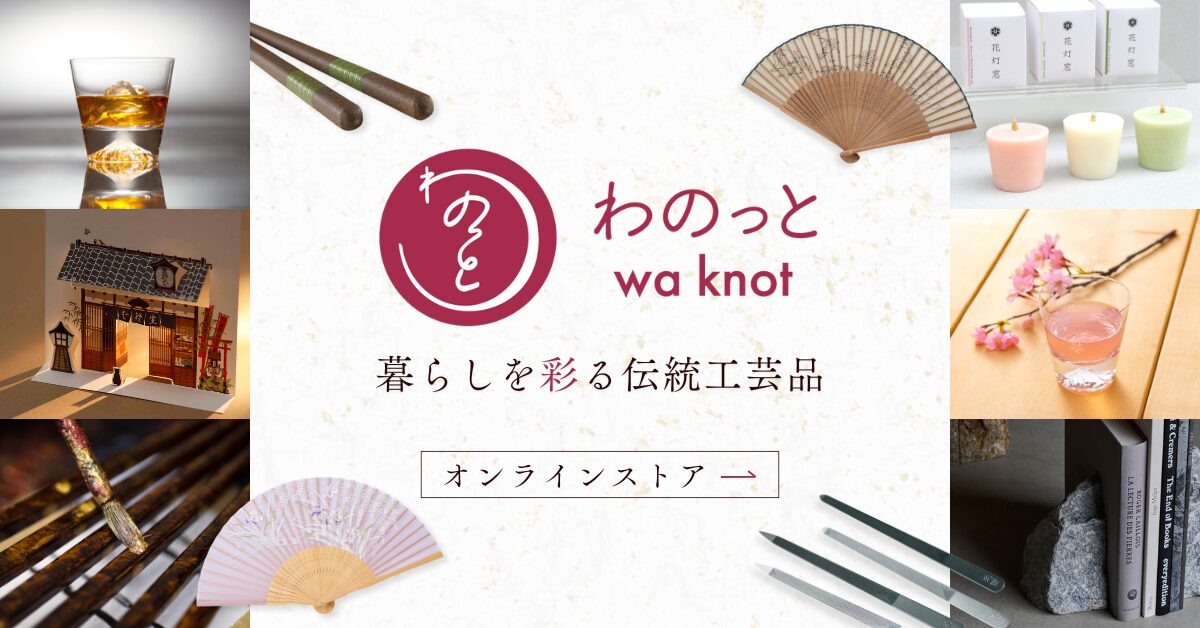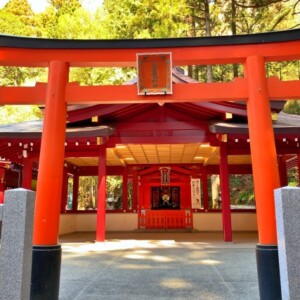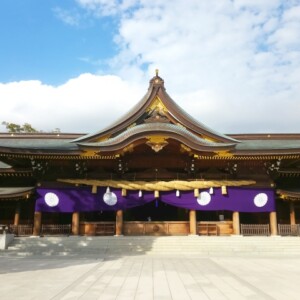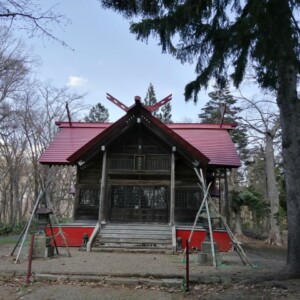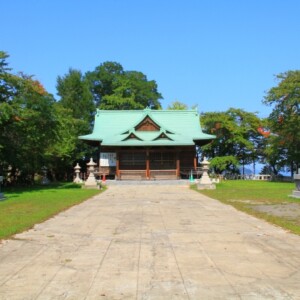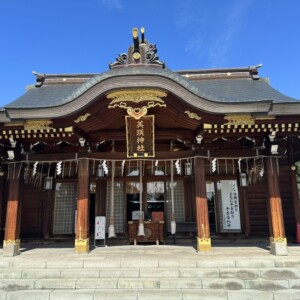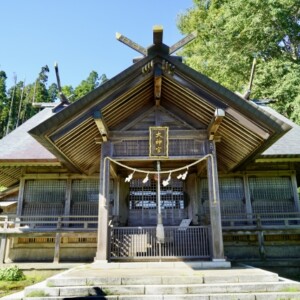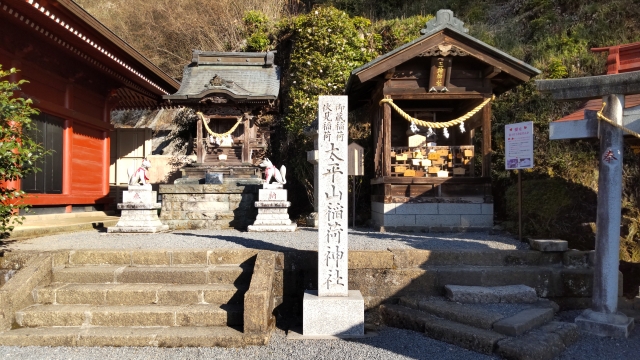
Taiheizan Shrine|Complete guide to the history, highlights, and worship information of this historic shrine
Taiheizan Shrine, located atop Mt. Taiheizan, 341 meters above sea level in Tochigi City, Tochigi Prefecture, is a historic shrine with a history of approximately 1,200 years. 1,000 stone steps lead up to the shrine, and the shrine continues to be loved by many visitors for its beautiful nature in each season and the magnificent view of the Kanto Plain.
Outline and basic information about Taiheizan Shrine
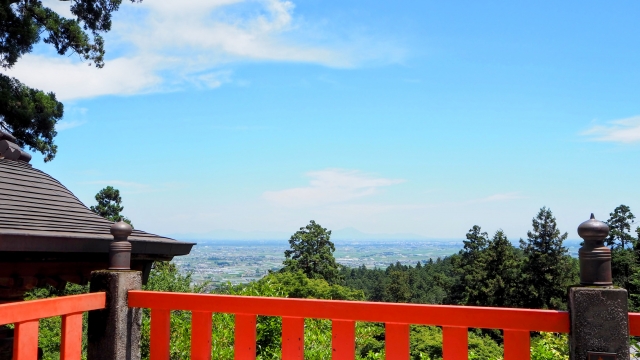
Taiheizan Shrine is located near the top of Mt. Taiheizan in Tochigi City, Tochigi Prefecture, and has been well known to local people as a shrine that watches over Tochigi City since ancient times. The 341-meter-high summit commands a panoramic view of the Kanto Plain and is often referred to as the “Matsushima of Riku” for its spectacular scenery. The approach to the shrine is a series of approximately 1,000 stone steps, affectionately known as “Ajisai-zaka (Ajisai Slope),” which in early summer welcomes visitors with beautiful hydrangeas.
History and Origin
Taiheizan Shrine was founded in 827 by Jikaku Daishi Ennin. The shrine has a long history dating back to the early Heian period (794-1185) and has been worshipped by many people, including warriors, and especially by the Tokugawa shoguns.
In the Edo period (1603-1867), the shrine was revered by successive Tokugawa shoguns, and the Zuijinmon Gate on the shrine grounds was built in 1723 by the 8th shogun, Yoshimune. The area around Mt. Taiheizan is also historically important, and is known as the site of an ancient battle between the Hojo and Minagawa clans in 1584. At the end of the Edo period, in the first year of the Genji era, the Mito Tengu party raised the banner of the Emperor’s expulsion of foreigners and set up their headquarters at Tamonin Temple on Mount Taiheizan.
Taiheizan also has a history: Kenshin Uesugi’s uncle served as the 6th chief priest at Taichuji Temple, located in the middle of Mt. This anecdote gave rise to the name “Kenshindaira,” a viewing spot near the summit of the mountain.
Gods and Benefits
Taiheizan Shrine enshrines Ninigi no Mikoto, Amaterasu no Mikami, and Toyokehime no Mikami as the main deities. These deities play an important role in Japanese mythology, and are believed to protect the peace of the land, a good harvest, and the happiness of people.
In particular, Taiheizan Shrine is widely known as a shrine for traffic safety, and many people visit the shrine to pray for traffic safety when they buy a car or motorcycle, as is indicated by the information that recommends purification at Taiheizan Shrine, the origin of traffic safety shrines. There are many shrines on the grounds beside the shrine worship hall, where many deities are worshipped for traffic safety, safe childbirth, and a good harvest.
The inner shrine of Taiheizan Shrine (Tsurugimiya and Bujimiya) enshrines Ameme-no-Ichi Okami, the deity of peace under heaven, the development of industries related to steel manufacturing, and the fulfillment of various desires. Thus, many deities are enshrined at Taiheizan Shrine to meet the various wishes of visitors.
Highlights and Features of Taiheizan Shrine
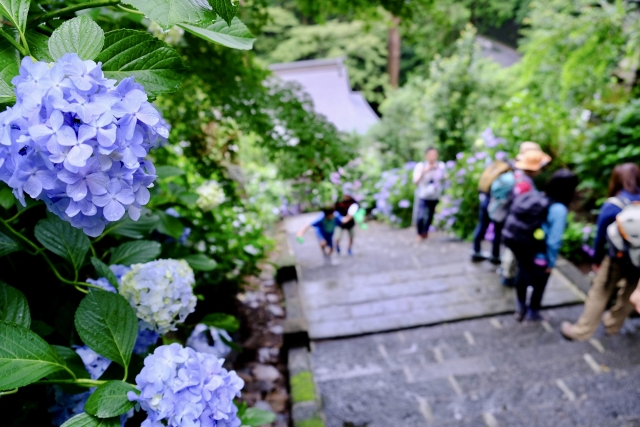
The charm of Taiheizan Shrine lies in its abundant nature, historic architecture, and the spectacular view from the top of the mountain. The shrine is loved not only by locals but also by tourists from far and wide as a place where beautiful scenery can be enjoyed throughout the four seasons. In addition, the journey to the shrine itself is a kind of training and a worthwhile experience.
Architectural and Structural Attractions
The grounds of Taiheizan Shrine are dotted with beautiful structures that evoke a sense of history. The Zuijinmon Gate in the precincts of the shrine was built in 1723 by the 8th Shogun Yoshimune, and is a valuable cultural asset that showcases the best of Edo period architectural techniques. The beautiful vermilion-lacquered building blends beautifully with the surrounding greenery, creating a sacred atmosphere for worshippers.
The main hall and other buildings are arranged to take advantage of the mountain topography, well representing the characteristics of shrine architecture that emphasizes a sense of unity with nature. Beside the shrine worship hall, there are many precinct shrines, each of which is a small shrine enshrining a different deity, receiving the various wishes of visitors.
The shrine grounds offer a panoramic view of Tochigi city, and the layout of the buildings is designed to maximize this view. The view from the front of the main shrine is particularly spectacular, and many visitors can be seen relaxing and enjoying the scenery after visiting the shrine.
The Beauty of Nature and Scenery
One of the greatest attractions of Taiheizan Shrine is the magnificent view from the summit. From Kenshindaira near the top of the mountain, the Kanto Plain can be seen at a glance, and the majestic view of the peaks below floating in the mist is called the Matsushima of Rikuno-no-Matsushima. From the gazebo on a clear day, one can see Mt. Tsukuba, and on a clear, sunny day, the skyscrapers of the Tokyo subcenter and Mt.
Taheizan has been selected as one of the “Japan Nightscape Heritage” sites, which are representative nightscape spots throughout Japan. Taheizan, which commands a panoramic view of the Kanto Plain and even the Tokyo Sky Tree, is known as the “Night View of One Thousand Ryo” instead of the “Night View of a Million Dollars. The main night view spots on Mt. Taiheizan are the gazebo at the top of the stairs from the parking lot in front of the Taiheizan Shrine and the observation deck at Kenshindaira. Benches are lined up so that visitors can sit and relax while viewing the night scenery.
You can also enjoy the beautiful changes in nature throughout the four seasons, with cherry blossoms in spring, hydrangeas in early summer, and autumn leaves in fall, each season showing different charms. Especially on rainy days, you can often hear the sound of tree frogs along Omotesando Avenue. The croaking of the “Ajisai-zaka no Ame Frog” is the only one in Tochigi Prefecture selected by the Ministry of the Environment as one of the “100 Soundscapes of Japan to Preserve”.
Ajisai-zaka, a 1,000-step stone staircase
One of the most memorable experiences during a visit to Taiheizan Shrine is the stone stair climb up the long approach to the shrine, which has approximately 1,000 stone steps on the main approach. The stone steps of the approach are called Ajisai-zaka (Hydrangea Slope). Famous for its approximately 2,500 hydrangea plants of various kinds, the temple is home to approximately 2,500 of these hydrangeas, which were first planted by the Lions Club in 1974.
These stone steps are not just an approach to the temple, but also a place of training for worshippers. Climbing the steps step by step is meant to purify the body and mind and to show respect to the gods. There are places along the stone steps where visitors can take a rest, allowing them to climb at their own pace without overdoing it.
During the hydrangea season from June to July, both sides of the stone steps are decorated with colorful hydrangeas, and the “Hydrangea Festival” is held. During this period, the area is crowded with tourists, and the beautiful flowers soothe the fatigue of climbing the stone steps. There is a wide variety of hydrangeas, with purple, blue, white, pink, and other colors to be enjoyed, and they will lift your gloomy mood during the rainy season.
Seasonal highlights of Taiheizan Shrine
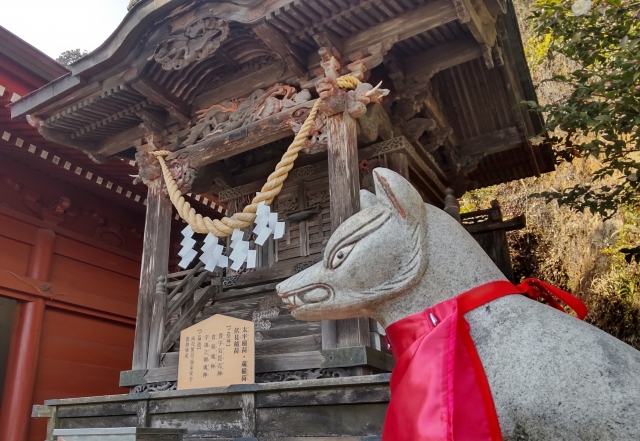
Taiheizan Shrine is known for its beautiful scenery throughout the four seasons. In particular, cherry blossoms in spring, hydrangeas in early summer, and autumn leaves in fall attract many tourists, and festivals and events are held according to each season. Visiting the shrine while feeling the transition of nature in each season is a deeply moving experience for the soul.
Spring Cherry Blossoms and Cherry Blossom Viewing
Spring at Taiheizan Shrine begins with the beautiful cherry blossom season. Taiheizan, which forms the center of the Taiheizan Prefectural Natural Park, is also known for its beautiful cherry blossom tunnels, hydrangea slope, and autumn foliage.
Especially at Kenshindaira, visitors can enjoy cherry blossom viewing during the cherry blossom season, and the area is also known for the stone monument “Roadside Stone” written by Yuzo Yamamoto. It is popular as a luxurious hanami spot where visitors can enjoy cherry blossoms and a spectacular view of the Kanto Plain at the same time.
Taiheizan’s specialties are Taiheizan dango, egg omelet with broth, and yakitori (grilled chicken), which can be enjoyed while viewing the cherry blossoms. These three specialties were originally made using chickens and rice dedicated to the Taiheizan Shrine, and can be eaten at teahouses around Kenshindaira and Taiheizan Shrine. Many teahouses are especially open during the cherry blossom season and crowded with cherry blossom-viewing visitors.
Early Summer Hydrangea Festival
The highlight of early summer at Taiheizan Shrine is the Hydrangea Festival, held from June to July, when approximately 2,500 hydrangeas planted along the “Hydrangea Slope,” a 1000-step stone staircase, are at their best. Various kinds of hydrangeas adorn both sides of the stone steps, welcoming visitors with a tunnel of beautiful flowers.
Visitors can enjoy a wide variety of hydrangeas, from common purple and blue hydrangeas to rare white and pink varieties. The beauty of hydrangeas wet in the rain is exceptional, and will make you forget the gloomy mood of the rainy season. In addition, on rainy days, you can often hear the sound of tree frogs along Omotesando Avenue, and the croaking of the “Ajisai-zaka no Ame Frog” has been selected as one of the “100 Japanese Soundscapes to Preserve” by the Ministry of the Environment, the only one of its kind in Tochigi Prefecture.
During the Hydrangea Festival, many visitors can be seen slowly climbing the stone steps while enjoying the flowers, and more people take more time than usual to enjoy their visit to the temple. It is also a popular photo spot, and it is common to see families and couples enjoying commemorative photos with the colorful hydrangeas in the background.
Autumn foliage and views
Taheizan Shrine in autumn offers a spectacular view of the beautiful autumn leaves and clear air. The entire mountain turns red and yellow, and together with the view overlooking the Kanto Plain, it is considered one of the most beautiful seasons of the year. The view from the gazebo and Kenshindaira is especially wonderful, with the contrast between the autumn leaves and the Kanto Plain in the distance.
In the clear autumn air, you can see Mt. Tsukuba in the distance, the skyscrapers of the Tokyo subcenter on a clear day, and even Mt. Fuji. Many tourists visit this luxurious spot to enjoy both foliage viewing and spectacular scenery at the same time.
Autumn is also the best season for viewing nightscapes. Taipingsan, known as “the night view of 1,000 ryo,” is most beautiful in autumn when the air is clear. From leaf peeping in the daytime to night viewing in the evening, Taheizan Shrine can be enjoyed throughout the day in autumn.
Visiting Guide
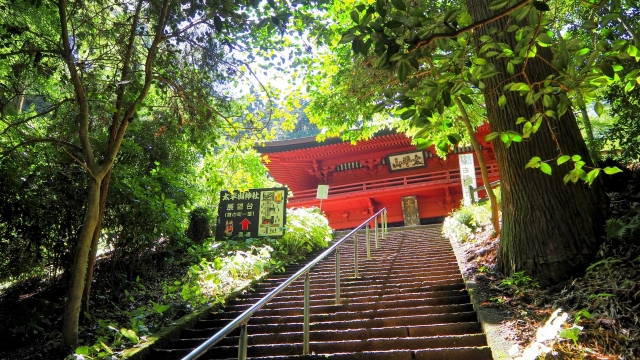
Visiting Taiheizan Shrine is not just a sightseeing tour, but an important time to purify your mind and face the gods. Knowing the correct way to visit the shrine will make your worship experience more meaningful. In addition, various events are held at the shrine throughout the year, each with deep meaning and tradition.
Worship Etiquette and Manners
Worship at Taiheizan Shrine begins with climbing a long flight of stone steps. The approximately 1,000 stone steps are not an easy path to climb, but as you climb them wholeheartedly, step by step, you will naturally purify your body and mind. It is important to climb at your own pace without overdoing it. Taking breaks along the way and enjoying the surrounding nature and scenery can be considered part of the worship experience.
When praying at the main shrine, follow the general etiquette for shrine visits. After purifying your hands and mouth at the hand- and mouth-watering basin, you should bow in front of the main shrine hall in the manner of “Nirei Ni-ni-hate-ichirie” (two rounds of applause and one round of bow). At Taiheizan Shrine, there is a line of offering boxes for different wishes, and visitors can put their money into the box that best suits their wishes.
There are no set hours for visiting the shrine, but purification services are available from 9:00 to 16:30 (consultation required outside of these hours). Shrines are generally open for visitation year-round, but it is recommended to check in advance, as this is subject to change due to weather and shrine events.
Year-round and Seasonal Events
Taiheizan Shrine holds a variety of events throughout the year. The most popular event is the Hatsumode (New Year’s visit) at the end and beginning of the year, when many visitors pray for happiness and safety in the New Year. Since the shrine is known as a shrine for traffic safety, many prayers for traffic safety when purchasing a new car are also held throughout the year.
The “Cherry Blossom Festival” is held in spring and the “Hydrangea Festival” in early summer, allowing visitors to enjoy the beauty of each season as they visit the shrine. During these festivals, special events and sales of local products attract many tourists.
In the fall, many visitors come for the Shichi-Go-San Festival, when families wish for the healthy growth of their children. Various prayers and exorcisms are also accepted throughout the year, and the shrine responds to a variety of wishes related to health, children, company/work, and building homes.
Information on red seals and charms
Visitors can receive a beautiful red seal at Taiheizan Shrine. The red seal, with the name of the shrine and the date of visit written in ink and stamped with the shrine’s seal, is loved by many people as a memorial of their visit to the shrine. Red seals can be obtained at the shrine office, or you can bring your own red seal book or purchase one at the shrine.
As for good luck charms, traffic safety charms are particularly popular, as is the case at Taiheizan Shrine, the birthplace of traffic safety shrines. Along with prayers for traffic safety when purchasing a car or motorcycle, there are also special amulets that can be personalized with your name and license plate number, which many people appreciate as a good-luck charm for you and your car only.
Other types of amulets are also available, such as those for safe delivery, academic achievement, prosperous business, and health, to meet the diverse wishes of visitors. For more information on the types of amulets and their prices, please visit the shrine office.
Access/Use Information
Taiheizan Shrine can be accessed by both public transportation and private vehicles, but each has its own advantages and disadvantages due to the shrine’s location on the mountain. It is important to choose the best access method, taking into consideration the purpose of your visit, your physical strength, and the circumstances of your companions.
Public Transportation Access
When using public transportation, Tochigi Station on the JR Ryomo Line and Tobu Nikko Line is the nearest station. From Tochigi Station, take the Kanto Bus Kokugakuin Line and get off at the Kokugakuin bus stop. The bus ride takes approximately 15 minutes. From the bus stop to the Taiheizan Shrine is a 30-minute walk up the mountain.
The Kanto Bus timetable and fares can be found on the Kanto Bus website. Elementary school students pay half the adult fare. Since it is quite a distance from the bus stop to the shrine and there are about 1,000 stone steps on the way, it is recommended that visitors using public transportation have enough time and energy to visit the shrine.
If you use your own car, it takes about 15 minutes from the Tochigi IC of the Tohoku Expressway toward Tochigi City, or about 30 minutes from the Sano-Fujioka IC of the Tohoku Expressway toward Tochigi. Although the mountain roads are paved, they are narrow in places, so it is important to drive safely. The area can be crowded, especially during the cherry blossom and hydrangea seasons, when many tourists visit.
Hours of Admission, Fees, and Parking Information
Taiheizan Shrine is basically open all year round, and there is no admission fee. However, exorcisms are available from 9:00 am to 4:30 pm, and consultations are required outside of these hours. Although the shrine itself can be visited from early in the morning to late at night, it is recommended to visit during daylight hours for safety.
Parking is available for several cars in front of the Taiheizan Shrine. There are also municipal parking lots nearby, including the Taiheizan Park Parking Lot and the Ajisai-zaka Parking Lot (accommodates approximately 150 vehicles, usually free of charge, but during the Tochigi Azalea Festival, a fee is charged). Since the parking lots are crowded during the cherry blossom and hydrangea seasons, early arrival is recommended.
Credit cards, electronic money, and smartphone payments are not accepted, so visitors should come prepared with cash. In addition, there are no facilities such as Wi-Fi or electrical outlet outlets. Because the shrine is located on top of a mountain, cell phone reception may also be unstable in some locations.
<Address> 659 Hirai-cho, Tochigi-shi, Tochigi 328-0054
Reference site
Taiheizan Shrine Official Website: https://www.ohirasanjinja.rpr.jp/
Tochigi City Tourism Association: https://www.tochigi-kankou.or.jp/spot/ohirasan-jinjya


